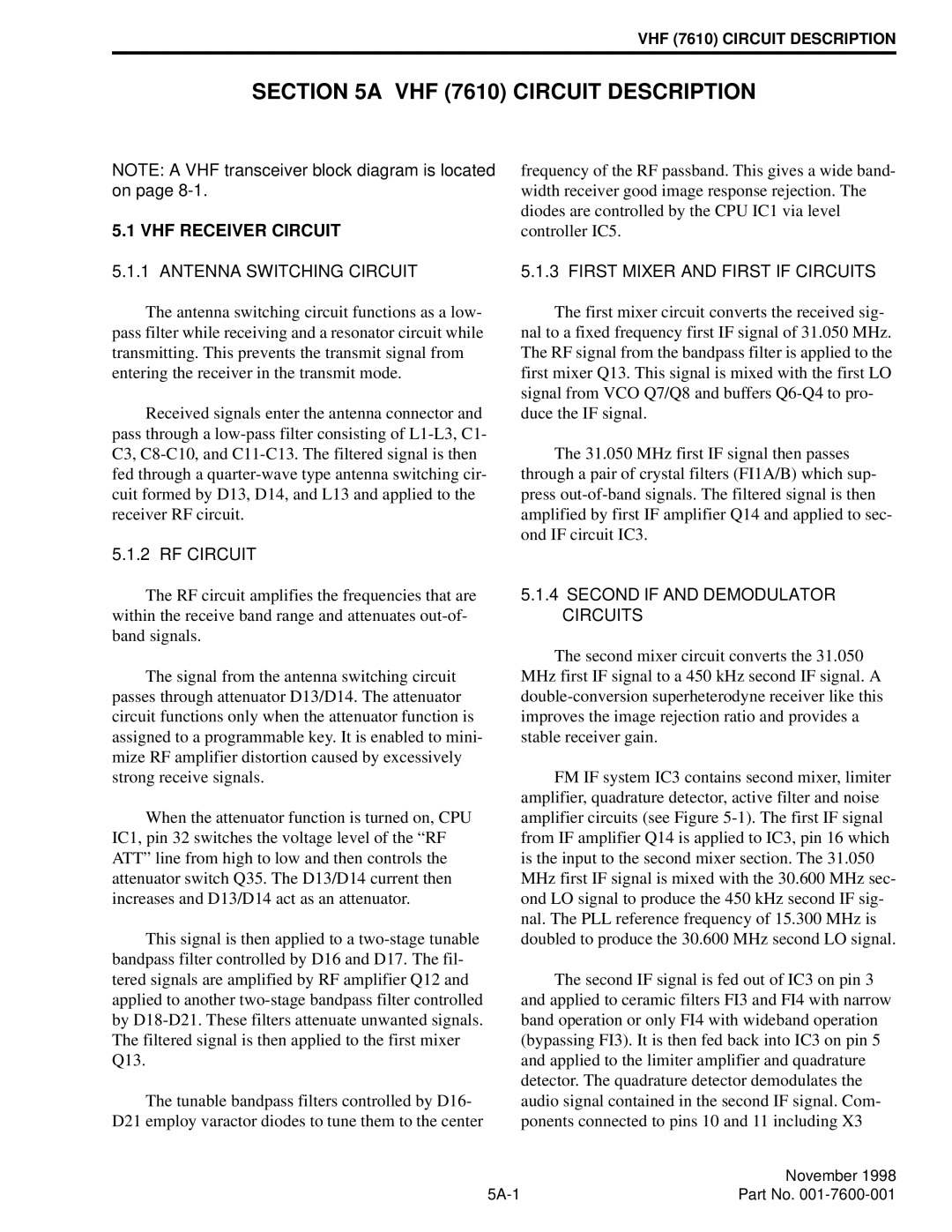VHF (7610) CIRCUIT DESCRIPTION
SECTION 5A VHF (7610) CIRCUIT DESCRIPTION
NOTE: A VHF transceiver block diagram is located on page
5.1 VHF RECEIVER CIRCUIT
5.1.1 ANTENNA SWITCHING CIRCUIT
The antenna switching circuit functions as a low- pass filter while receiving and a resonator circuit while transmitting. This prevents the transmit signal from entering the receiver in the transmit mode.
Received signals enter the antenna connector and pass through a
5.1.2 RF CIRCUIT
The RF circuit amplifies the frequencies that are within the receive band range and attenuates
The signal from the antenna switching circuit passes through attenuator D13/D14. The attenuator circuit functions only when the attenuator function is assigned to a programmable key. It is enabled to mini- mize RF amplifier distortion caused by excessively strong receive signals.
When the attenuator function is turned on, CPU IC1, pin 32 switches the voltage level of the “RF ATT” line from high to low and then controls the attenuator switch Q35. The D13/D14 current then increases and D13/D14 act as an attenuator.
This signal is then applied to a
The tunable bandpass filters controlled by D16-
D21 employ varactor diodes to tune them to the center
frequency of the RF passband. This gives a wide band- width receiver good image response rejection. The diodes are controlled by the CPU IC1 via level controller IC5.
5.1.3 FIRST MIXER AND FIRST IF CIRCUITS
The first mixer circuit converts the received sig- nal to a fixed frequency first IF signal of 31.050 MHz. The RF signal from the bandpass filter is applied to the first mixer Q13. This signal is mixed with the first LO signal from VCO Q7/Q8 and buffers
The 31.050 MHz first IF signal then passes through a pair of crystal filters (FI1A/B) which sup- press
5.1.4SECOND IF AND DEMODULATOR CIRCUITS
The second mixer circuit converts the 31.050 MHz first IF signal to a 450 kHz second IF signal. A
FM IF system IC3 contains second mixer, limiter amplifier, quadrature detector, active filter and noise amplifier circuits (see Figure
The second IF signal is fed out of IC3 on pin 3 and applied to ceramic filters FI3 and FI4 with narrow band operation or only FI4 with wideband operation (bypassing FI3). It is then fed back into IC3 on pin 5 and applied to the limiter amplifier and quadrature detector. The quadrature detector demodulates the audio signal contained in the second IF signal. Com- ponents connected to pins 10 and 11 including X3
| November 1998 |
Part No. |
